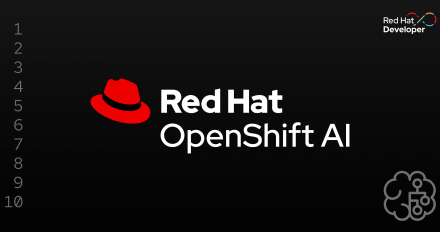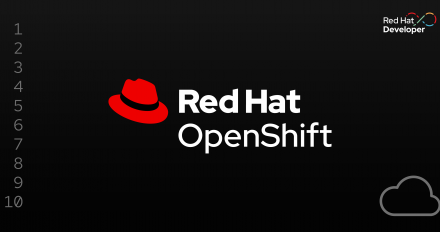
What's new in Network Observability 1.8
Explore the latest features in Network Observability 1.8, an operator for Red Hat OpenShift and Kubernetes that provides insights into network traffic flows.

Explore the latest features in Network Observability 1.8, an operator for Red Hat OpenShift and Kubernetes that provides insights into network traffic flows.

Learn how to set up NVIDIA NIM on Red Hat OpenShift AI and how this benefits AI and data science workloads.

Red Hat build of Quarkus 3.20 offers enhanced observability, a modern WebSocket extension, and performance optimizations for faster, native-ready applications.

Discover the UDN feature for network segmentation in OpenShift, and learn how it addresses virtualization workload challenges in the Kubernetes platform.

Learn how to write serverless functions with Node.js.

Red Hat OpenShift Serverless is based on the Knative open source project. It provides a uniform and tightly integrated interface across the hybrid cloud ecosystem. This video covers how to deploy and update applications, route traffic to applications, and auto-scaling.

Explore how RamaLama makes it easier to share data with AI models using retrieval-augmented generation (RAG), a technique for enhancing large language models.

Sign up for the Red Hat Developer Newsletter

Contact Sales - Red Hat Developer

The Red Hat Developer program brings developers together to learn from each other and create more extraordinary things, faster. We serve the builders. Those who solve problems and create their careers with code.

Discover how to create a local environment running MicroShift to deploy and test Kubernetes applications on your laptop.

In this article we examine the new Cryostat 4.0 OpenShift Web Console Dynamic

Learn about the new Cryostat 4.0 release and the Agent Autoconfiguration feature

Pick a topic below that interests you, then go through one of the self-paced tutorials!

Discover seven new features in the Network Observability CLI 1.8 update and explore detailed examples demonstrating all the improvements.

Learn about writing and debugging policies on a local machine and advanced templating available in recent Advanced Cluster Management releases (part 3 of 3).

Pick a topic below that interests you, then go through one of the self-paced tutorials!

Discover why Istio ambient mode is better than the traditional sidecar model and how to deploy it using the Red Hat OpenShift Service Mesh 3.0 operator.

Build here. Go anywhere.
We serve the builders. The problem solvers who create careers with code.
Join us if you’re a developer, software engineer, web designer, front-end designer, UX designer, computer scientist, architect, tester, product manager, project manager or team lead.